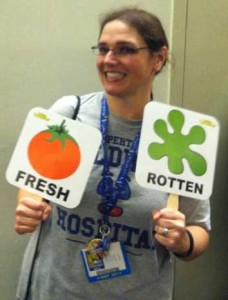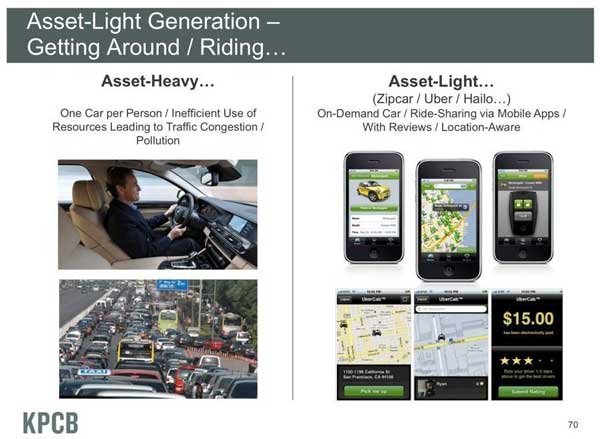Above the blur of noise comes a single voice – “The Rotten Tomatoes panel is going to be awesome” – and everyone around nods like some secret message had been delivered. As one we then speed walk to the back of the convention center, Room 8.
The line forms but it’s not a true Comic-Con line – where you wait in line for four hours – for this one the wait is brief and we all get in. The room is full of buzz and we still don’t know why. Then a woman in a super hero costume comes rushing out. We are handed paddles with rotten on one side (splat image) and fresh on the other (red tomato).
Film critics from Variety, Extra, Access Hollywood, IGN, Fanhattan and two of America’s most prominent writers Nell Minow and Leonard Maltin – stream onstage. We are to argue with them over our favorite movies (or most hated) to see if we can win over the crowd. Who passionately display their paddles with either rotten or fresh.
We’re starting to understand what the buzz is about…the title of the panel is Your Opinion Sucks! Rotten Tomatoes Critics vs. Fans.
The crowd is already shouting movies and random nerd phrases. The first person queues up and starts the battle with this phrase: “Zod didn’t need to die”. The crowd bursts out with agreement showing the rotten side of their panels. Until a critic shouts back “Zod should have lived!” and some in the crowd agree. Then both the fan and critic descend into point-by-point arguments.
If you don’t know what all this is about then that is Comic-con 2013. Overly obsessed fans talking about there passions with obsessed professionals. In this case they are debating, Man of Steel, the new Superman movie and the main antagonist in the movie.
The other movies we debate: The Room, Drive, Fantastic Four, Iron Man 3, Judge Dredd, Pacific Rim.
The fans get into it, but the critics – oh wow – they are just as crazy. Angrily slamming their own rotten or fresh panels into the air. Vehemently disagreeing with the rabble. The hour breezes by and then we are rushed out the door. Given a free Rotten Tomatoes tshirt and it’s on to our next event.
Just another Comic-con panel.




